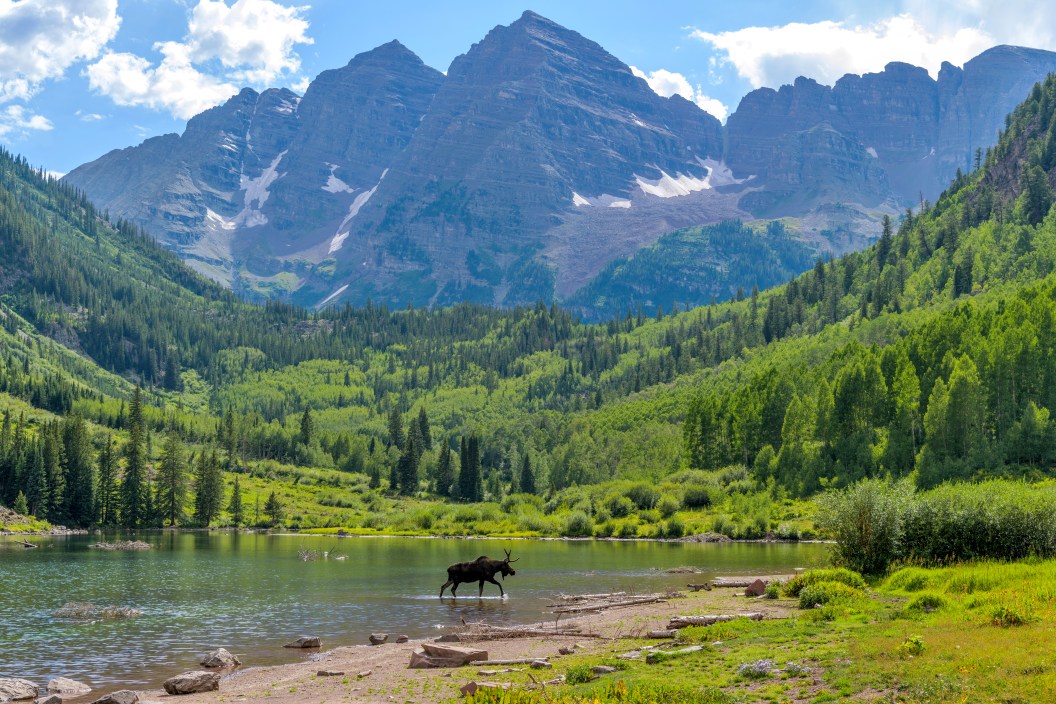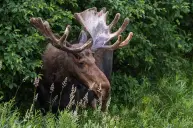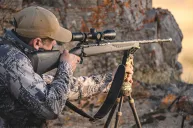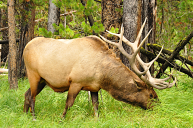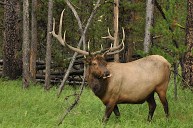Moose hunting is near the top of the bucket list for many North American hunters. These massive animals are the largest members of the deer family and are the second-largest land animal in North America after the bison. Standing up to 7 feet at the shoulder and weighing 1,200 pounds, just one large bull moose can provide enough meat to last a whole year.
These surprisingly elusive creatures also inhabit some of the most breathtaking environments our country has to offer. Preferring cold climates, moose range across Canada, Alaska, the northern states of the Lower 48, and the Rocky Mountains, with the densest populations in Alaska, Maine, and Wyoming. But you can't simply pack up your hunting gear and head to those places expecting to bag a moose.
Why Moose Hunting Is a Bucket-List Item
Unfortunately, moose numbers aren't what they once were hundreds of years ago. Adult mortality is up and calf survival is down, due in large part to stresses incurred by climate change. In many places, moose become infected with brainworm, which causes paralysis, and increasing tick numbers, which can cause significant blood loss in moose.
Because of the declining populations, most states institute some type of drawing system for moose hunts. There are almost never enough tags to meet demand, which means you could be waiting for a very long time to draw one of these coveted big game hunting tags. And, in many states, once you've been drawn once, you can never enter again, whether you were successful or not. This makes many moose hunts a literal hunt of a lifetime.
Despite these hurdles, a moose hunt is well worth the effort. You'll just need to put in some extra work—and patience—upfront. Below are the best moose-hunting states, as well as what you need to do to secure a tag.
1. Alaska
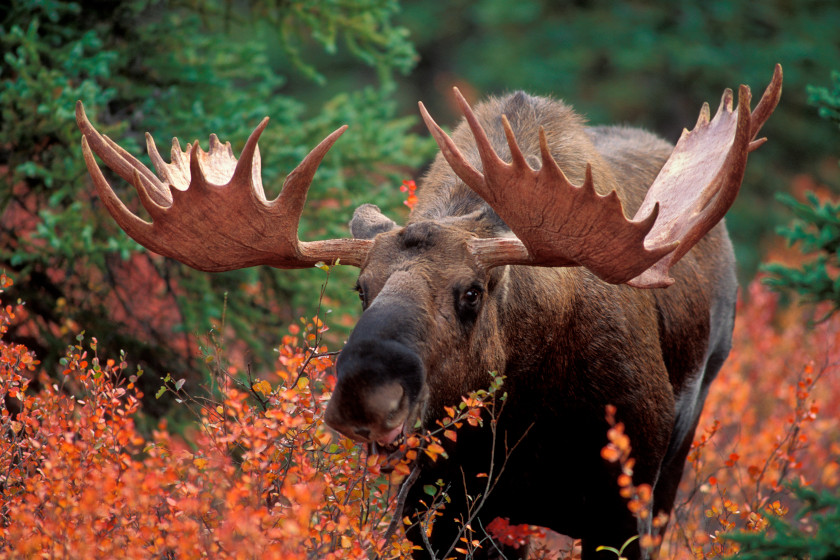
Getty Images, RONSAN4D
The Last Frontier is the top moose-hunting destination in North America. Not only are there nearly 200,000 moose in Alaska—making it the most moose-dense state in the U.S.—but the Far North is also home to the biggest subspecies of moose.
If you're looking for a true trophy moose, Alaska is the place to harvest one. Alaskan bull moose can stand 7 feet at the shoulder and weigh over 1,400 pounds. Debra Card holds the record for the Safari Club International's highest-scoring moose in all of North America, with an Alaskan moose she took outside the small town of Cordova. The monster weighed 1,800 pounds.
And while it's far easier to obtain a tag here than in other states, the downside is that moose hunting in Alaska is more expensive than anywhere else unless you're a resident. A moose tag costs up to $800, and that's not including the fee for an Alaskan hunting license. Plane tickets and the expense of bringing your harvest back home with you could cost you thousands more.
Much of Alaska is incredibly remote, and hiring a guide is highly recommended for all citizens and is required if you're visiting from another country.
Hunting for Alaskan moose is mostly spot and stalk through the heavy brush of the backcountry. Season dates vary wildly from area to area. Popular draw-only hunts have dates that vary as well. Some take place in early September, while others run from November through December.
2. Maine
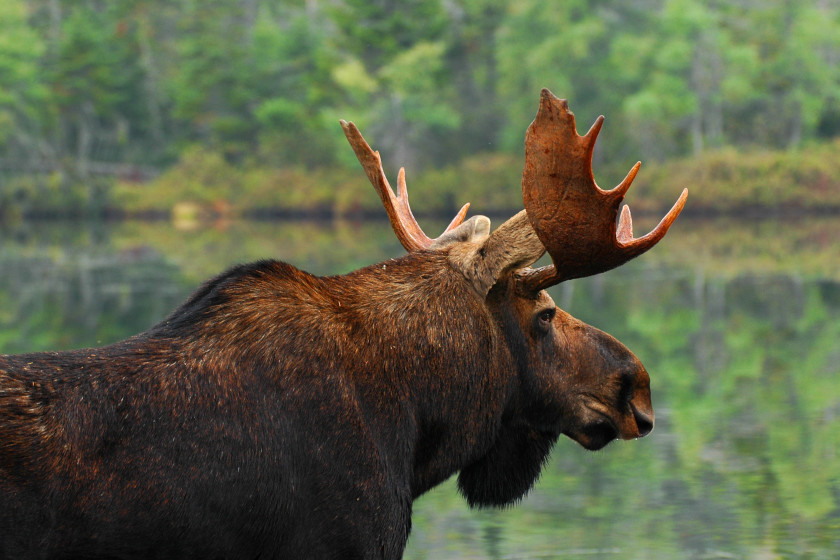
Getty Images, KJMPhotography
Outside of Alaska, no other state has more moose than Maine. The downside is that getting an opportunity can be an exercise in frustration. The state only hands out about 2,200 permits each year from over 50,000 applicants. Due to the high demand, Maine moose permits are only administered through a chance lottery, a competitive auction, and a small allocation for disabled veterans.
If you don't have a ton of money to blow in an auction and aren't a disabled veteran, your only option is the chance lottery. While the odds aren't great in general—about 4.4 percent—your odds improve each successive year you apply, as you can accrue points for your persistence that earn you extra chances in the drawing. If you're a Maine resident who is 65 or older, you're guaranteed a permit if you have more than 30 points in the system. Hunting lodges are also granted permits, so you could hire an outfitter for a Maine moose hunt—if that's in your budget.
Maine moose hunting, like many U.S. moose hunts, is mostly spot and stalk. The big difference here is you're likely going to be hunting in timber harvest areas where logging may be going on. In general, the northern part of the state is considered better for moose hunting than the south, and more permits are issued in the more northerly wildlife management districts.
Season dates depend on where you are hunting but are generally short.
3. Wyoming
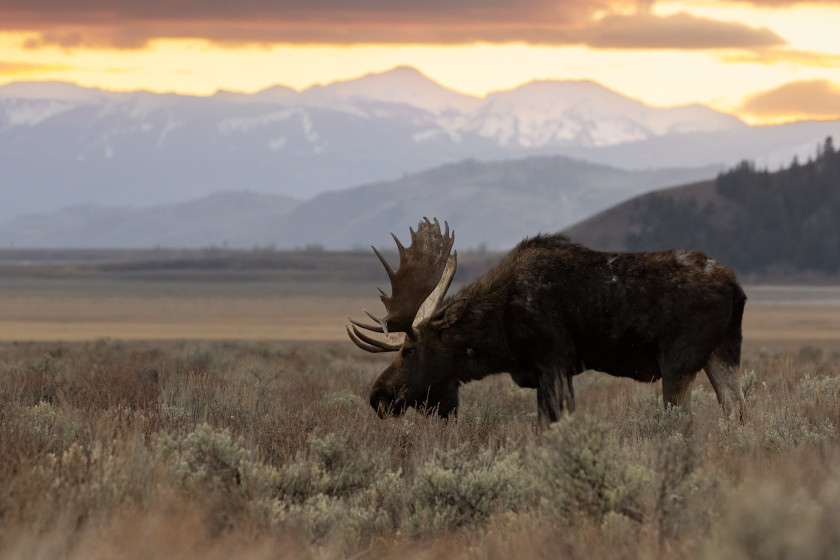
Getty Images, Harry Collins
While Wyoming may be called the Equality State, the doling out of moose licenses is heavily weighted in favor of residents. But that's no reason to discount Wyoming as a moose-hunting destination. Wyoming is home to some of the largest Shiras moose in the world, and the Boone & Crockett world record was harvested there in 1952. The monster was a 205 4/8-inch bull with a 53-inch spread, taken by John M. Oakley near Green River Lake.
Just be aware that you may have to wait a while to snag a license. Wyoming also uses a chance lottery, with 90 percent of Wyoming moose licenses for residents, leaving only 10 percent for nonresidents. However, in many areas, cow licenses are easier to obtain.
The good news about Wyoming is that a successful moose hunt doesn't have to be your last. Hunters who are successful in the draw are subject to a five-year waiting period before they can apply again. That's a long wait, but that's still better than never hunting them again.
4. Colorado
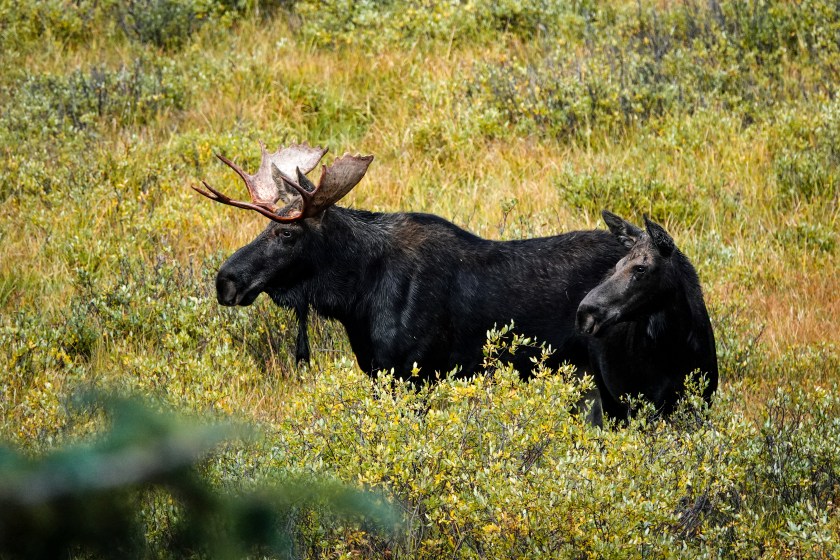
Getty Images, Raclro
While the Centennial State is better known for its elk hunting, there are some hunting opportunities for mature moose bulls, too. Colorado is home to the Shiras moose subspecies; and though it's the smallest subspecies in North America, the bulls still get plenty big. The Pope & Young world record for the subspecies Shiras moose was shot in Park County, Colorado, in 2015, a 192-incher taken by Robert S. Hebert.
Colorado provides one of the more gorgeous backdrops for moose hunting season, but the downside is that you must draw a tag. Moose populations in Colorado aren't as robust as in other states, and hunting opportunities are limited. The more you apply, the more you can earn preference points that tip the odds in your favor, but don't expect to hunt your first year. This is a matter of playing the long game.
Colorado has a lifetime bag limit of one antlered moose. Season dates are Sept. 7-29 for archery, Sept. 14-22 for muzzleloader, and Oct. 1-14 for rifle.
5. Idaho
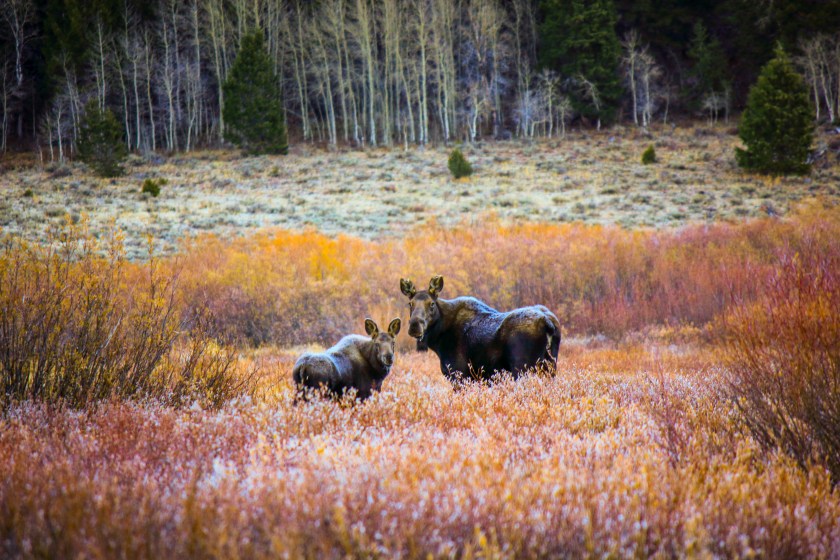
Getty Images, Michael Cummins
Much like Colorado, a hunt for a moose in Idaho is a once-in-a-lifetime experience. The bag limit is set at one cow and one bull for life, so you better make sure it's the one you want before you squeeze that trigger.
The good news is there are two chances to apply for a permit to hunt Idaho moose, and they don't have a preference points system as other states do. That means your odds of drawing the first year are the same as someone applying for the 30th time.
Idaho isn't an easy hunt by any means. The state has some seriously rugged terrain, so moose hunting here might be a little more physically exerting than in other states. For the hunters who stick it out, Idaho can provide some of the best moose-hunting opportunities in the country.
Idaho Fish and Game provides a hunt planner that gives odds on different areas so you can better plan for a successful hunt. The application period is April 1-30 each year.
6. Montana
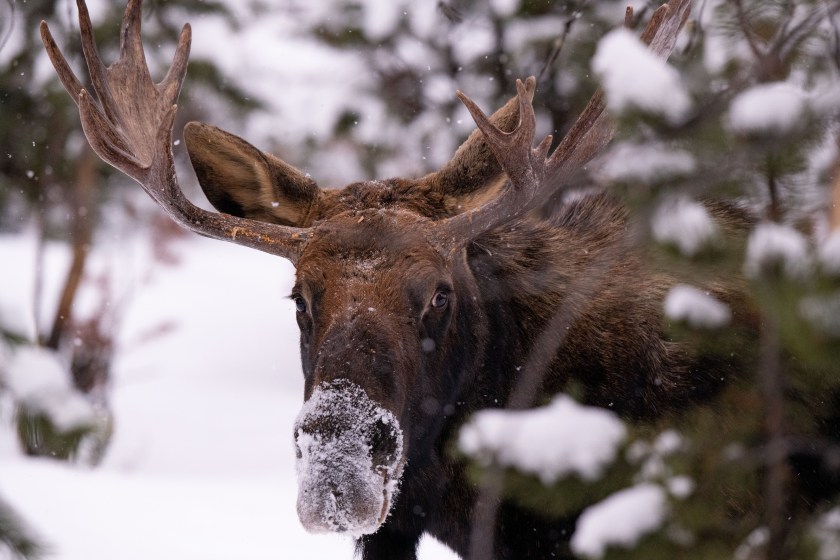
Getty Images, Kathy Gasper
Big Sky Country has incredible public-land hunting opportunities and some big Shiras bulls. However, the odds are not good that you'll draw a tag for one. Around 25,000 applicants per year submit for the Montana moose permit draw, and in 2018 only 350 hunters successfully drew a permit.
Residents are given preference, so it's even worse for nonresidents. In 2018, 3,001 nonresidents applied for the moose draw, but only 15 were lucky enough to get one. Some years, it's been harder to get a moose permit in Montana than a bighorn sheep permit, which is infamous for being one of the most difficult permits to obtain in the U.S. and Canada.
5. North Dakota
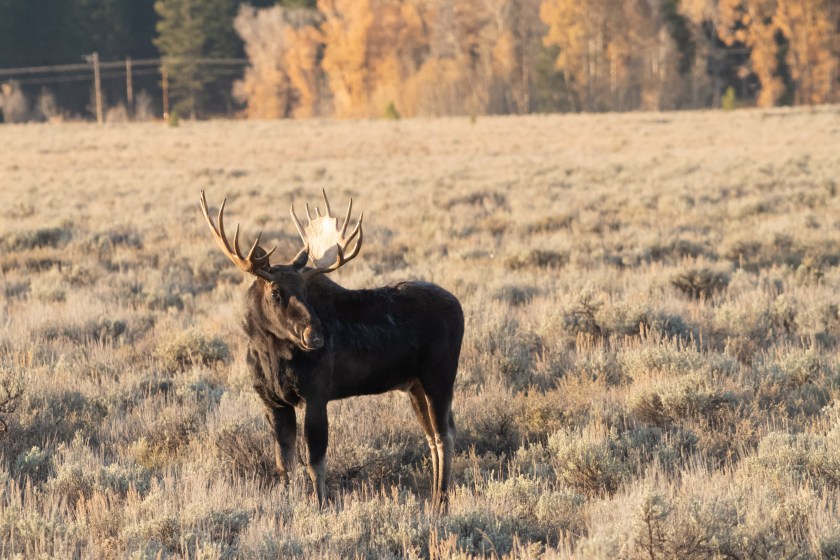
Getty Images, charlie96271
North Dakota flies under most people's radar for moose hunting. The reason for that is simple: Moose only dwell in a handful of hunt units there. In a recurring theme for all these states, the odds are against you. The state issued 334 permits in 2018, which was a new record—from tens of thousands of applicants. If you're a nonresident, you're out of luck completely, because this hunt is only open to North Dakota residents.
We haven't heard about any truly gigantic moose being harvested in North Dakota, but the moose population is apparently on the rise. If you're a North Dakota resident, it certainly can't hurt to put in for the lottery each year. Who knows? Maybe you'll be one of the lucky ones selected for the hunt of a lifetime.
7. Washington
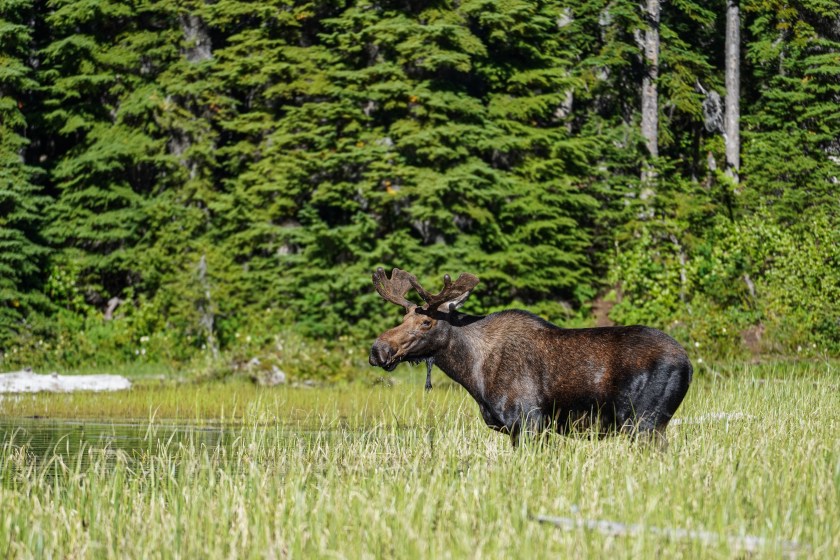
Getty Images, Dave Acheson Photography
There are three ways for moose hunters to obtain a coveted moose permit in the Evergreen State. The first is a draw system method—and, as usual, the odds aren't great. Some areas saw as many as 8,000 permit applicants but only around a dozen lucky winners.
Another option is to buy tickets in a special hunt raffle for $6 apiece for the opportunity to score one of two moose permits. Odds here depend on the number of tickets sold, but 4,792 were awarded in 2018.
The third option is to bid for a permit in an auction presented by the Washington Department of Fish and Wildlife. Of course, this is one of the more expensive routes, as you may be betting against someone with much deeper pockets than yours. But if you can get a permit in Washington, the good news is that the state is home to some huge bulls in some beautifully rugged country.
8. Utah
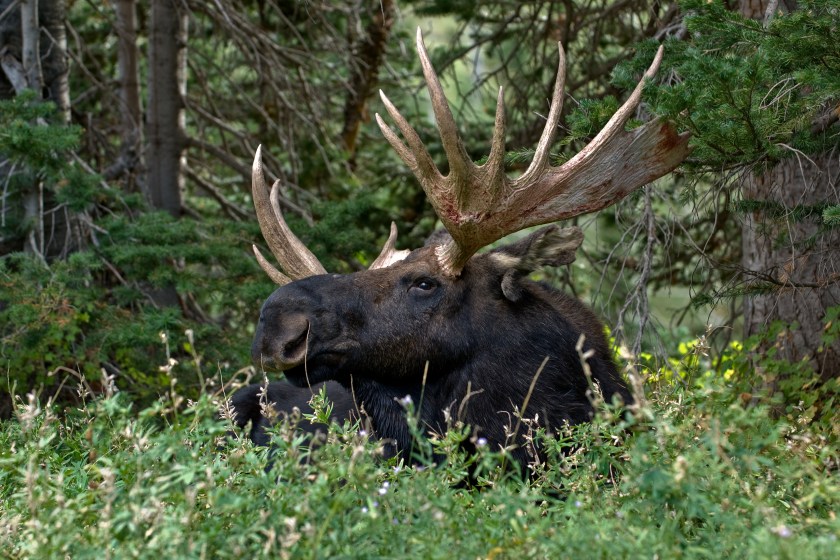
Getty Images, Itphoto
Like Colorado, Utah is better known for elk hunting than moose. But some large bulls are running around in the Beehive State. Getting a permit depends on a draw system, and four permits are sold each year at fundraising auctions. Some areas are easier to get tags for than others; the ones with the best odds are the Cache, Ogden River, and Wasatch units.
Much like in other states, hunting moose in Utah is quite expensive. Resident prices are more reasonable at $413. Non-residents feel a bigger punch to the pocketbook, at $1,500 for a tag.
Utah has plenty of guide services with high success rates that can up your odds. Many of these guide services give access to hundreds of square miles of private land that is off-limits to other hunters. Hiring a guide is usually expensive, but at least you'll have the area to yourself.
9. New Hampshire
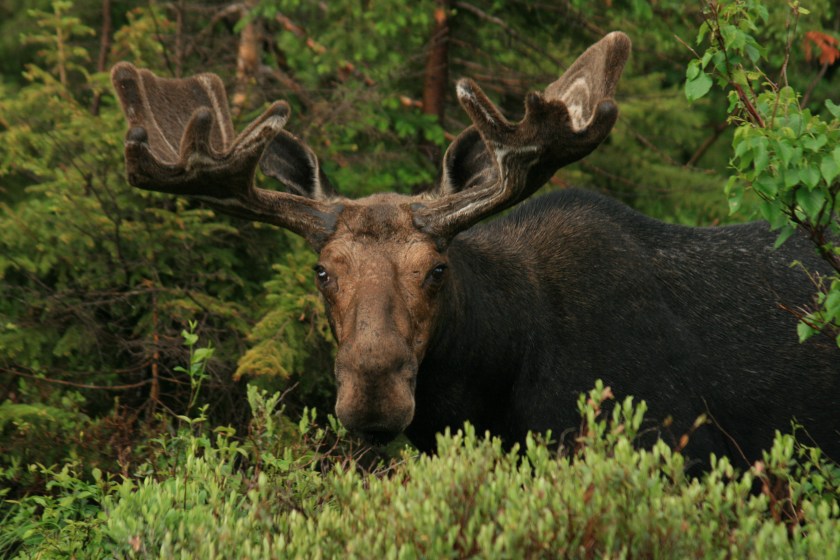
Getty Images, Vibrant Earth Studio
While you don't often hear about the Granite State in discussions about hunting, it's possible to harvest a trophy bull moose in New Hampshire. We're starting to sound like a broken record, but as you might expect, your odds of getting a permit are low. As with many other states, getting a moose permit in New Hampshire is often the result of years of applying in the draw. The more points you build, the better your odds.
One thing that is helpful is that the New Hampshire Fish and Game Department publishes a list of the number of applications and odds based on the number of points. This can allow you to be more strategic in how you apply each season.
Another downer: Moose season in New Hampshire is usually extremely short. It was only nine days in 2019, but the plus side is that fewer hunters means less hunting pressure and animals that aren't as wary as in other parts of the U.S.
READ MORE: Alaska Moose Hunting: Everything You Need to Know
